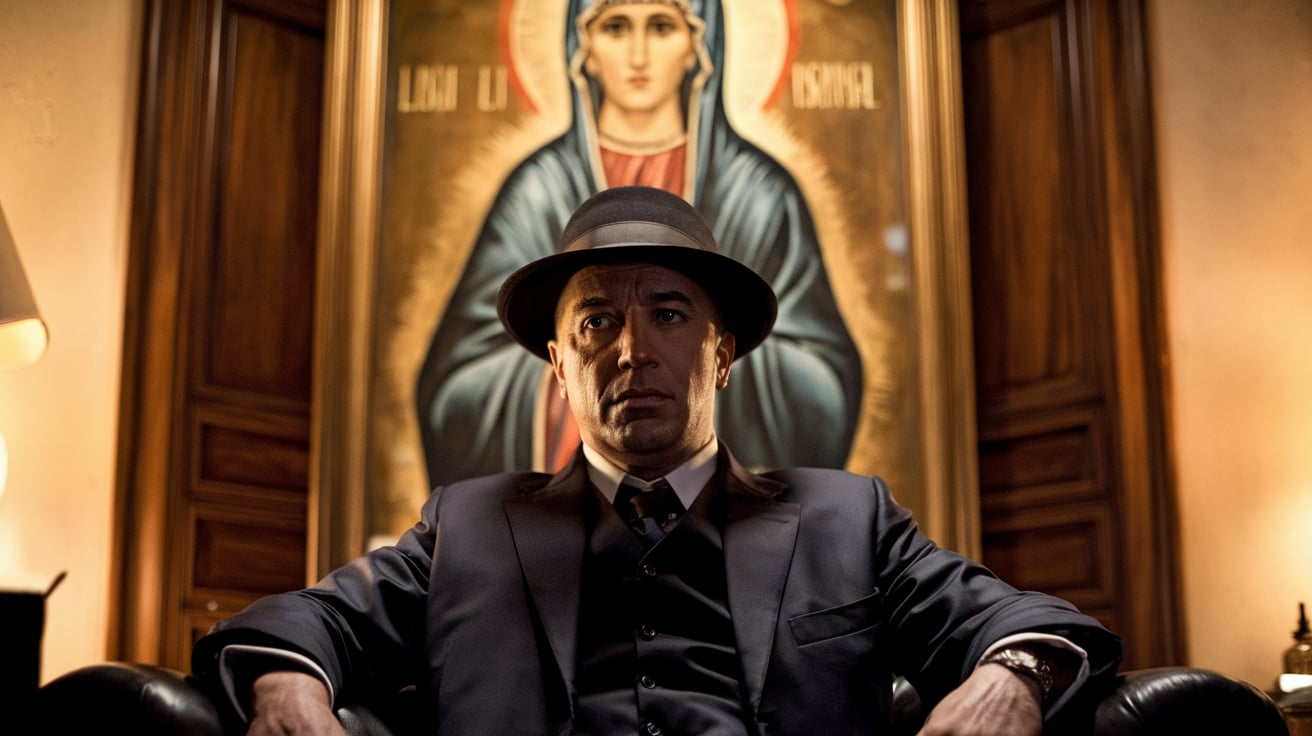The “mafia code of silence NYT” refers to the unspoken rule of silence observed by mafia members, ensuring loyalty and secrecy within their ranks. This code is often symbolized by the term “Omertà,” a word that embodies the refusal to cooperate with authorities, particularly law enforcement. In many mafia circles, breaking the code is considered a serious betrayal, with harsh consequences. The mafia code of silence has become an essential part of mafia lore, influencing how organized crime operates and how outsiders view the criminal underworld. This blog post will explore the origins, significance, and impact of Omertà, as highlighted in various New York Times articles, offering readers a deeper understanding of this fascinating yet dangerous cultural practice.
Omertà, the mafia code of silence, is not just a rule but a way of life in the world of organized crime. It prevents members from divulging secrets to outsiders, especially to the police. One of the most well-known examples of this code can be seen in mafia trials, where witnesses refuse to testify or give evidence, even in the face of serious charges. This practice is intended to protect the organization and its members from prosecution, and it is heavily enforced. The mafia code of silence is more than just a simple vow of secrecy; it is a test of loyalty. Members who break the code are often subjected to extreme punishment, including isolation or death. Over time, this unyielding loyalty to the code has become one of the most defining aspects of mafia culture, cementing its place in the history of organized crime.
What is the Mafia Code of Silence NYT? Understanding Omertà
The Mafia Code of Silence, often referred to as Omertà, is a fundamental principle in mafia culture, where members vow to remain silent about any illegal activities and not cooperate with authorities. This code ensures that the mafia organization remains hidden from law enforcement. The New York Times often references Omertà when discussing organized crime and its stronghold over individuals within the mafia. Omertà is more than just a code; it’s a cultural tradition passed down through generations, ensuring loyalty and protection for the group. Breaking this silence can lead to severe punishment, including death. This principle of secrecy is not only crucial for the mafia’s operations but also defines its ongoing mystery and power in modern criminal circles.
The History Behind the Mafia Code of Silence NYT and Its Cultural Significance
The mafia code of silence has deep roots in Sicilian history and culture, where it originally emerged as a way for peasants to protect themselves from external authorities. This tradition was passed to the mafia, where it became a central tenet of loyalty. According to the New York Times, Omertà grew as the mafia established its control over Sicily and later expanded to other parts of the world. The code was a form of resistance against government control and law enforcement. Over time, it became synonymous with the mafia’s power, enforcing secrecy not just for protection but to maintain dominance. This code’s cultural significance transcends just criminal acts and represents a form of honor, discipline, and protection within mafia communities.
How the Mafia Code of Silence NYT Shapes Organized Crime Today
The Mafia Code of Silence, or Omertà, continues to influence organized crime today, as described by the New York Times. This strict adherence to silence makes it incredibly difficult for law enforcement to infiltrate mafia organizations. It creates a culture of secrecy and distrust, where members are taught from a young age that betrayal is the ultimate crime. As a result, law enforcement struggles to gather evidence against mafia families. The code keeps criminal activities under wraps, allowing the organization to grow and operate without interference. Today, even with advances in technology and surveillance, the Mafia Code of Silence remains a significant barrier for authorities, keeping mafia operations shrouded in secrecy.
Breaking the Mafia Code of Silence NYT: Consequences and Real-Life Stories
Breaking the Mafia Code of Silence, as highlighted in the New York Times, often leads to severe consequences. Members who break Omertà face not only legal repercussions but also social and physical punishment from their peers. Real-life stories of mafia turncoats reveal the danger involved in cooperating with law enforcement. These informants risk their lives by speaking out or providing testimony. Some are put into witness protection programs, while others face retribution, including death. These extreme consequences serve as a deterrent, making it clear that breaking the code is unacceptable in mafia culture. The strict enforcement of Omertà maintains discipline within the organization and prevents betrayal from within its ranks.
The Role of Omertà in Mafia Loyalty and Secrecy: Explained
Omertà plays a crucial role in maintaining loyalty and secrecy within the mafia, as emphasized in the New York Times. It serves as the foundation for trust between mafia members, ensuring that everyone in the organization is bound by the same rules. Loyalty to the group and silence about its illegal activities are paramount, and any deviation from these principles is seen as an act of disloyalty. This rule of silence fosters unity and discourages any form of cooperation with outsiders. It also creates an environment where members feel safe from external scrutiny, allowing the mafia to grow and flourish. Omertà is not just a rule; it is the glue that holds the mafia together and keeps its operations running smoothly.
Why the Mafia Code of Silence NYT Is So Hard to Break
The Mafia Code of Silence is difficult to break because it is deeply ingrained in mafia culture and reinforced by severe consequences, according to the New York Times. The code is instilled in members from a young age, creating a strong psychological bond to loyalty and secrecy. This code serves as a form of protection for both the individual and the organization. Betraying the code is not only a violation of trust but is often met with extreme retribution, including death. The mafia’s internal code of silence is so powerful because it relies on both fear and loyalty, making it nearly impossible for individuals to break free. Those who attempt to break the silence often face dire consequences that outweigh the potential rewards of cooperating with authorities.
Omertà in the Modern World: The Continuing Legacy of the Mafia Code of Silence
In the modern world, the legacy of Omertà continues to shape organized crime, even as mafia organizations evolve and adapt to new technologies and legal systems. The New York Times often reports on how modern mafia families still adhere to this centuries-old code of silence. Despite advancements in law enforcement and digital surveillance, mafia members remain steadfast in their commitment to silence. Omertà persists as an essential part of mafia culture, preventing members from betraying their organization even in the face of increasing pressure from authorities. The continuing influence of this code highlights the mafia’s resilience and the power of loyalty and secrecy in sustaining criminal enterprises in today’s world.
Mafia Code of Silence NYT: How Law Enforcement Battles Omertà
Law enforcement faces a significant challenge in breaking the Mafia Code of Silence, as described in the New York Times. Prosecutors and investigators often struggle to gain information or testimony from mafia insiders due to the unbreakable loyalty to Omertà. Over the years, authorities have developed tactics such as undercover operations, surveillance, and using informants to infiltrate mafia families. However, these efforts are often thwarted by the fear of retaliation. Despite these challenges, law enforcement has made significant strides in breaking through the code by offering witness protection programs and deals for mafia members willing to testify. The battle against Omertà remains a central issue in the fight against organized crime.
The Mafia Code of Silence NYT: What Happens When You Break It?
When you break the Mafia Code of Silence, the consequences are severe, as reported by the New York Times. The act of betraying the mafia by cooperating with authorities is seen as a grave violation, punishable by violent retribution. Mafia members who break Omertà risk their lives, as they are often targeted for elimination. Even those who offer limited information are seen as threats to the organization’s survival. The harsh punishment for breaking the code serves as a deterrent for others who may consider turning against the mafia. This unwavering commitment to silence ensures that members remain loyal and prevents law enforcement from gaining crucial information about the inner workings of the organization.
Lessons from the Mafia Code of Silence NYT: Trust, Loyalty, and Secrecy
The Mafia Code of Silence teaches valuable lessons about trust, loyalty, and secrecy, which are emphasized in the New York Times. The code highlights the importance of maintaining confidentiality and staying loyal to one’s group, even under intense pressure. This unwavering loyalty to the organization and the secretive nature of the mafia creates a sense of unity and purpose within its members. However, these principles also come with significant consequences, as betrayal is seen as one of the worst offenses. The lessons from Omertà serve as a reminder of the power of secrecy and the lengths individuals will go to protect their loyalty to a cause or group, even in the most dangerous circumstances.
Conclusion
In conclusion, the mafia code of silence is a powerful and important part of organized crime culture. Known as Omertà, it keeps the mafia strong by ensuring loyalty and secrecy among its members. Even though law enforcement has worked hard to break through this code, it remains difficult to crack. The strict consequences for breaking the code make it one of the toughest barriers to overcome in the world of organized crime.
Despite its challenges, the mafia code of silence continues to shape how criminal organizations function today. Omertà creates an environment where trust and loyalty are highly valued, but it also shows the dangers of living a life based on secrecy and fear. Understanding this code gives us an insight into the complicated world of the mafia and how it has survived for so many years.
FAQs:
Q: What is the mafia code of silence?
A: The mafia code of silence, known as Omertà, is a rule that prevents mafia members from speaking to the police or sharing information about crimes.
Q: Why is Omertà so important to the mafia?
A: Omertà is important because it ensures loyalty and keeps the mafia’s criminal activities hidden from law enforcement, helping the group stay strong and secretive.
Q: What happens if someone breaks the mafia code of silence?
A: If someone breaks the mafia code of silence, they face severe consequences, such as punishment or even death, for betraying the group.
Q: How do law enforcement try to break Omertà?
A: Law enforcement tries to break Omertà using tactics like undercover operations and offering protection to mafia members willing to testify against the group.
Q: Does the mafia still use the code of silence today?
A: Yes, the mafia still follows the code of silence today, though law enforcement has made some progress in breaking it with modern techniques and informants.

